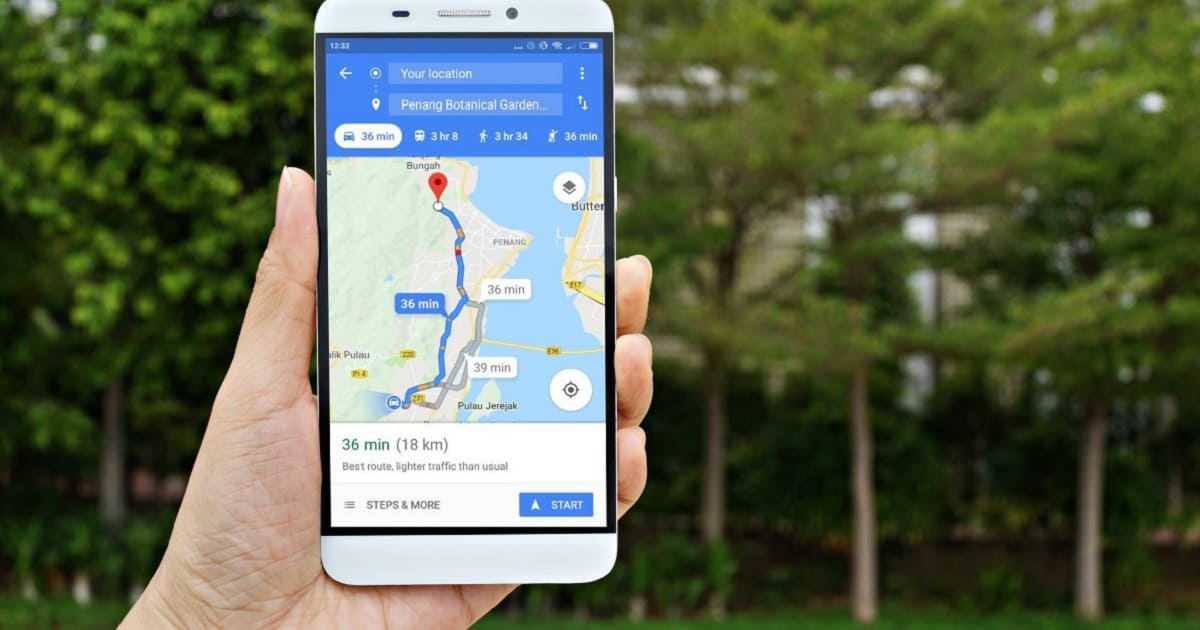If you have driven on unknown roads, or even known ones, you must surely have depended on some kind of navigation system. Long gone are the days when you would have to memorize street maps before traveling to a new area. In this age of technology-driven navigation software, Google Maps has become explosively popular.
It is a great help for navigating new roads and also predicting the traffic density of an area as well as finding the best alternative route for your destination. The offline feature even helps you in areas with poor or no connectivity.
ADVERTISEMENT
Let us tell you more about the algorithm that Google Map uses to help us on the road:
1. Google Maps uses Machine Learning to suggest roads with low traffic
Google Maps helps users understand the route with the lowest traffic to reach their destination. In a post, Google explained,
ADVERTISEMENT
“We also look at the size and directness of a road—driving down a highway is often more efficient than taking a smaller road with multiple stops.”
2. Google collects location data from all users in an area to give live traffic details
Google Map collects data from users in an area to give accurate traffic updates. The data collected is used to also show possible routes to your destination and the traffic in each of them.
3. Google Maps uses previous traffic patterns of roads to provide information about the traffic condition at that particular time.
For example,
ADVERTISEMENT
“one pattern may show that the 280 freeway in Northern California typically has vehicles traveling at a speed of 65mph between 9-11 am, but only at 15-20mph in the late afternoon. We then combine this database of historical traffic patterns with live traffic conditions, using machine learning to generate predictions based on both sets of data,”
4. After partnering with sister company DeepMind, Google Maps intends to improve time accuracy
DeepMind is an AI research under Google parent company Alphabet. Having partnered with DeepMind, Google Maps uses the machine learning architecture known as Graph Neural Networks to predict the estimated time of arrival with better accuracy.
5. Google Maps uses data and patterns of over 13 years to give accurate traffic insights
Google Maps uses past data and patterns of over 13 years to make predictions regarding traffic and provide correct real-time data.
6. Road quality is considered to provide ETA and suggest better routes
One of the best features of Google Maps is that it keeps track of road conditions before suggesting it and estimating ETA. Roads that are paved or unpaved, or covered in gravel, dirt, or mud are detailed on the app, and the time of arrival is calculated accordingly.
ADVERTISEMENT
7. While users are using the app, Google uses machine learning continuously to indicate traffic conditions
While you use the app to drive to a certain location, Google Maps continuously uses machine learning to predict traffic conditions.
8. Google Maps basically uses Graph algorithms namely Dijkstra’s algorithm and A* algorithm to find the shortest route
To calculate the shortest distance from the source (point A) to the destination (point B), Google Maps uses Graph algorithms namely Dijkstra’s algorithm and A* algorithm.
9. What are Dijkstra’s algorithm and A* algorithm?
Well, they are graph data structures which is a collection of nodes that are represented by edges and vertices.
Dijkstra’s algorithm
You probably would have heard of Dijkstra’s algorithm if you have been into programming. It was proposed by Edsger.W. Dijkstra in 1956 and after three years it was published. Dijkstra’s algorithm is utilized to optimize and locate the shortest route between nodes in a graph. It is an effective algorithm.
Use of Dijkstra’s algorithm in Google maps
There are many variants for this particular algorithm.
- A single node is fixed by the variant as the source and then effectively finds the shortest path to other nodes.
- With this concept, Google Maps calculate and display the shortest and quickest path between two points.
The downsides,
ADVERTISEMENT
- In Google Maps, the number of nodes is almost infinite or uncountable, so with an increase in time and space complexity, this algorithm may fail. This is where the A* algorithm comes in handy.
A* algorithm
Formulated especially for weighted graphs, the A* graph algorithm is one of the most satisfactory graph traversal and path search algorithms.
Why A* algorithm is better than Dijkstra’s algorithm?
- This algorithm is complete and optimal, and efficient.
- A* algorithm helps to navigate a better and more efficient path by using a heuristic function.
- The A* algorithm concentrates on only the destination nodes and not the other nodes unlike Dijkstra’s which makes it more proficient.
- It also takes into account parameters like distance, time requirement, etc., thus, optimizing and choosing the more promising nodes.
Did you find it insightful? Let us know in the comments section.
